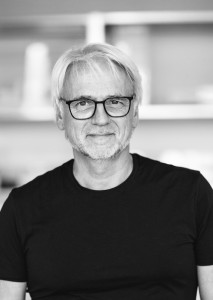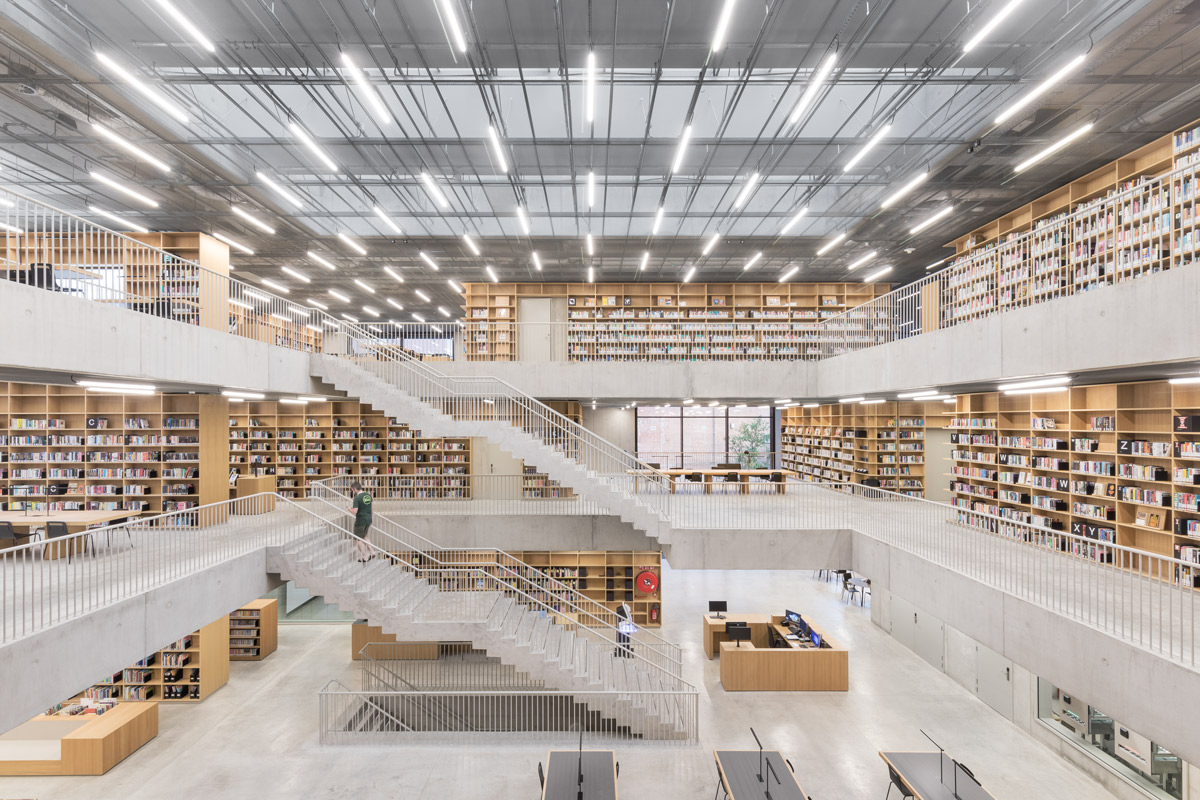Locked down: KAAN Architecten
Faced with the lock down imposed on all to counter the spread of the Covid-19 virus, many architects had to adapt their practice and their working method to this new rhythm of life. AA’s “Locked down” series gives them a voice, by questioning their vision of the situation – but also their cultural recommendations. Today, we are travelling to Rotterdam to meet Kees Kaan, partner and founder of KAAN Architecten.
L’Architecture d’Aujourd’hui: Where are you locked down and how did you get organised to continue working?
 Kees Kaan: The lockdown in The Netherlands is relatively soft. A lot of responsibility is expected from the individual, there is no military in the streets. Overall, I see people taking care and behaving according to government’s recommendations. At the office, we started preparing for the lockdown in February. It was mainly about taking some extra IT measures and defining a protocol that enables a complete switch to remote work. We closed our offices in the middle of March, and since then ‘working from home’ has been the modus operandi. At the moment we are looking at how to reopen in the so called 1,5 meter economy.
Kees Kaan: The lockdown in The Netherlands is relatively soft. A lot of responsibility is expected from the individual, there is no military in the streets. Overall, I see people taking care and behaving according to government’s recommendations. At the office, we started preparing for the lockdown in February. It was mainly about taking some extra IT measures and defining a protocol that enables a complete switch to remote work. We closed our offices in the middle of March, and since then ‘working from home’ has been the modus operandi. At the moment we are looking at how to reopen in the so called 1,5 meter economy.
Are containment and architecture opposites?
KK: I wouldn’t say they are opposites. Architecture is not about enabling as much public interaction as possible. It is all about the relation of private behaviour in different public domains. It is about finding working relations and careful definitions of spaces for public and private interaction.
If social distancing permanently changes human interaction, then that will be a fundamental architectural issue. It will impact how we’ll redesign our physical world, from the detail to the territory.
What lessons do you think you will learn from the ecological impact of this crisis?
KK: We see that nature is flourishing. No further explanation needed. Our standard behaviour has had a devastating impact on the environment. Having said that, this does not mean we are lost and should not try to mitigate this effect. We are operating on the frontline of our profession and the building industry is one of the largest impactors in that environment. In our most recent experiences we learned that making our buildings more sustainable works better when the link that is made between capex and opex, when we not only design to win crazy competitions but also design to build and operate the building. When the lifecycle becomes an integral part of the brief, sustainable design gets a proper dimension. This crisis shows us how quickly nature responds in a positive way to small changes in our behaviour. We should remember this when things turn back to ‘normal’.
A film to see / a book to read during lockdown?
KK: Although in lockdown, I am still working in our practice, as well as teaching and running the architecture department in TU Delft. At home, I am living with a family with children still in the school age. They are also ‘working’ from home. It is a very dynamic and lively setting here, no lonesome moments. So now that we work remotely, it is not that I find an ocean of time to read or watch movies, rather the opposite. Not commuting saves time, but online work is slower and more focused.
I have no special books or films associated with the lockdown, although a very nice book comes to mind immediately. It is Being there by Jerzy Kozinski. It tells the story of a gardener, coming out of a lifetime lockdown in his garden, who is suddenly confronted with our society. It appears he has developed a completely fresh, non-corrupted and disarming state of mind.
A social network to follow?
KK: Instagram accounts @cp.complexprojects, @datapolis_cp, @espaciogris
What do you expect from this experience?
KK: I hope that after lockdown we can maintain some parts of the remote working system. In certain cases, it is more effective than continuously trying to meet physically. It saves travel time and it is better for health and the environment.
I also learned how vulnerable our system/economy is. It is entirely cashflow based. There are hardly any reserves. When the cash stops flowing, systems collapse. We somehow need to make our economy more sustainable. This requires us to plan for the long term rather than for the quick win. Make companies more resilient on one hand, the employment system more flexible on the other.
A very interesting phenomenon is how quickly the new exceptional became the new normal. People can adapt quickly and easily to new rules which become new norms, and then we display different behaviour. Dutch government bet on people’s sense of responsibility by announcing a relatively loose lockdown. I think it has worked, and it has set an example.
The 1.5-meter rule made us more gentle towards each other, and maybe even more polite. We avoid unnecessary movement and we have developed a cure from the ‘fear of missing out’ caused by intense social media exposure. Maybe we can hold on to this feeling after lockdown gets alleviated.
What impact does this containment have on the perception of both your workspace and domestic space?
KK: I have always loved working from home. I like the idea of participating in processes without being constantly present in the office. I have a great workspace in my house that allows me to work comfortably and in an effective way. Still, I miss the office and my team very much today.
The lockdown has forced many people with children to combine family life with daily work. Most of us have had a good opportunity now to test our homes, not just as places for touchdown and sleep, but as real homes to live in, spend hours together with family and find a good balance between privacy and company. I am sure the requirements for our living spaces will be critically reviewed in the near future. I am also sure that most of us will be relieved when the kids go back to school and the office reopens.
I’m also doing my teaching and other TU Delft related work remotely. We meet students and have critique sessions online. It works, but it is far from ideal. Although it surely is a very interesting additional tool, online environments cannot replace real-life interaction (yet). This is why I believe that, as physical entities, the faculty and the office space will remain important for teamwork and for the special ambience they have to exchange ideas and knowledge. The question is, however, if the large open spaces crammed with people are sustainable in the coming years.
When the digital age started, some predicted that paper industry would die, but the opposite occurred. We use more paper now than ever before.
On one hand remote work might reduce the need for office/work space, but increase the need for living space on the other. Maybe the reduction was already assumed in the previous crisis implemented in ‘flexwork’ offices.
The need for social distance increases the demand for built space and infrastructure in general, and this is interesting in the context of the density debate. The Covid-19 charts displayed on all media clearly showed the relation between urban density and levels of contamination. The denser the area, the more likely and quickly the virus could spread.
This puts the entire discussion on density, urbanity and territorial development of metropolitan areas in a new perspective. Maybe the polycentric model of The Netherlands is not such a bad one in this context after all.
_____
KAAN Architecten website.
_____
Also discover the AA Projects special issue dedicated to KAAN Architecten, available on our online store.




